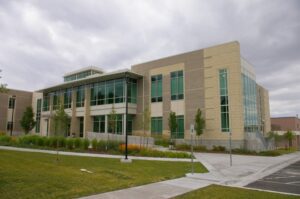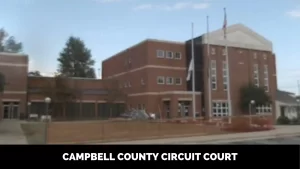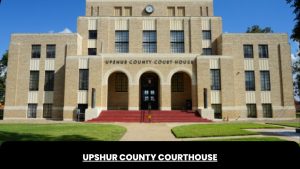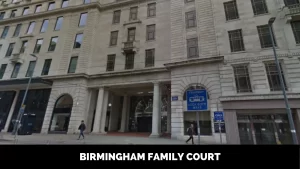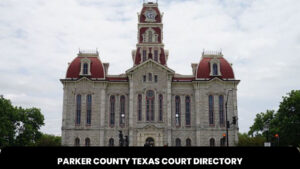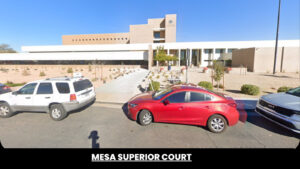Eastern District of Kentucky Federal Court
Nestled in the foothills of Appalachia, the Eastern District of Kentucky has played an important role in shaping the law and lives of residents across the eastern half of the state. As both the setting of high-profile cases and the guardian of justice for everyday citizens, this federal court has left an indelible print upon the region. The Eastern District’s journey through time parallels the growth and changes of Kentucky itself. From its early days overseeing moonshine cases during Prohibition to recent hot-button issues like opioid lawsuits, this court has handled a remarkable docket. Even as societal tides have shifted around it, the Eastern District has kept its focus on upholding the Constitution and laws of the United States. For attorneys, judges, and the public, this district court remains an essential component of civic life. As it moves into the future, the rich history and continuing work of the Eastern District of Kentucky will keep writing the story of justice in the eastern half of the state.
Overview of the Eastern District of Kentucky
The Eastern District of Kentucky spans a wide geographical area from the rolling bluegrass region to the mountainous Appalachian area in the southeast. The district encompasses 68 counties with a population of nearly 2 million residents. It is the largest federal court district in Kentucky based on population. The Eastern District handles federal cases arising from those 68 counties in the eastern half of state.
Courthouses Across the District
The Eastern District is headquartered at the United States Post Office and Courthouse located at 101 Barr Street in Lexington, Kentucky. This main courthouse houses the offices of the four district court judges, the clerk of court, and other administrative functions. Five additional courthouses serve as divisions of the Eastern District:
- Covington: Handles cases from Northern Kentucky metro area
- Frankfort: Covers counties surround state capitol
- London: Serves far southeastern counties near Tennessee border
- Ashland: Handles easternmost counties along West Virginia border
- Pikeville: Serves eastern Kentucky coalfield region
This network of courthouses allows the Eastern District to adjudicate cases close to where they originated across its vast jurisdiction. Parties can access the court without needing to travel great distances, which bolsters access to justice.
Judges, Staff and Case Types
The Eastern District has four active district judges who preside over cases from the courthouse in Lexington. There are also five federal magistrate judges who assist with matters like settlement conferences and pretrial proceedings. The judges are supported by a clerk of court who maintains records and administrative staff who keep the court running smoothly.
As an Article III federal court, the Eastern District holds jurisdiction over cases arising under federal law, including:
- Criminal cases from federal law enforcement agencies
- Civil lawsuits involving federal law, U.S. government, or diversity jurisdiction
- Bankruptcy filings from the district
- Appeals from decisions of federal administrative agencies
This varied docket keeps the Eastern District busy resolving issues big and small that help shape the body of federal law.
The History Behind the Eastern District Court
To understand the present-day operations of the Eastern District, it helps to examine key moments from its nearly 200 year history. The court has evolved to reflect the changing needs and demographics of eastern Kentucky.
Early Years of Operation
Congress officially created the Eastern District of Kentucky through a statute passed on February 12, 1801 during the term of President John Adams. Kentucky had only become a state seven years earlier in 1794. The new federal court shared space with local county offices until its own building was constructed.
For the first half century, the district only had one judge who traveled between courthouses to hold sessions around the region. The Eastern District saw a variety of cases in these early years, ranging from debt disputes and property claims to suits against boat captains navigating the Ohio River. By 1851, rising caseloads led Congress to appoint a second judge to the district.
Industrialization in the Late 1800s
As coal mining and the timber industry took hold in eastern Kentucky in the late 1800s, the district court saw more cases related to industrial accidents, property rights, contract disputes, and labor issues. The judges developed expertise in cases involving mines, natural resources, railroads, and labor relations that shaped local laws. Judges would even travel by horseback into the hollows and coal camps to hear cases firsthand from miners and their families.
Prohibition Drives New Docket
The enactment of Prohibition in 1920 dramatically impacted the Eastern District by spurring countless cases against moonshiners and bootleggers. The mountainous geography made the region rife for distilling illegal liquor. With judges issuing stiff sentences and fines, prohibition cases crowded the court’s docket throughout the 1920s and early 1930s. The court struggled to keep up with the volume of cases driven by prohibition violations.
Divisional Courts Established Mid-Century
In 1954, Congress approved the divisional structure still used today, designating separate court locations in London, Ashland, Covington and Pikeville to improve access. More judgeships were also authorized. This expansion better positioned the court to handle growing caseloads and made the court more convenient for parties across the district’s widespread territory.
Notable Cases Through the Years
From coal strikes to political corruption, the Eastern District has presided over numerous landmark cases:
- 1977: The court ordered the Atlanta Braves to honor contracts assigning the minor league Lexington Legends team’s player rights, in a case that established professional baseball’s collusion rules.
- 1980s: The court oversaw lawsuits against coal companies associated with striking miners that helped establish key precedents in labor law.
- 1990s: In the “Operation Boptrot” case, the court convicted 15 Kentucky lawmakers for accepting bribes in one of the biggest political corruption stings in state history.
- 2000s: The court presided over the criminal case against Darrell Richards, sentencing the county judge-executive to over 17 years for running an oxycodone trafficking ring in eastern Kentucky.
- 2010s: Ongoing multi-district litigation continues over the health impacts of opioid abuse against pharmaceutical makers and distributors alleged to have contributed to the epidemic.
Inside the Daily Operations of the Court
Beyond the newsworthy trials, much of a federal court’s work happens through routine procedures that keep the wheels of justice turning. Here’s a look behind the scenes at the standard inner workings of the Eastern District:
Appointing Judges to the Bench
The President appoints federal judges, who must then be confirmed by the Senate. Appointments often take into account recommendations from Kentucky senators. Judges receive lifetime tenure to maintain independence. Vacancies occur due to retirements, deaths or judges moving to senior status. The process then starts anew.
The Marshal Protects the Court
The U.S. Marshal plays a key role providing security for the courthouse, judges and other personnel. The marshal also serves warrants and court papers and may house federal detainees headed for trial. The current U.S. Marshal post for the Eastern District is vacant pending appointment.
Handling a High Volume of Cases
The clerk of court processes around 2,000 new cases per year, ranging from major crimes to routine disputes. The judges divide up the docket through random assignment. Magistrate judges help manage the crowded docket by settling cases or handling pre-trial litigation. Each judge relies on courtroom deputies and law clerks for support.
Familiar Faces in the Courtroom
Local federal defenders and U.S. attorneys frequently litigate cases in the Eastern District. Judge develop familiarity with these lawyers, as well as attorneys in private practice who regularly appear before the court. Members of the Kentucky bar make up the jury pools that also lend a local flavor to trials.
Following Local Rules and Traditions
Each district court sets some local rules covering logistics like filing procedures. The Eastern District follows certain norms for decorum, scheduling and motion practice. Lawyers must master the local rules and adapt to the personalized ways judges manage their courtrooms. Familiarity breeds respect in this legal community.
Practicing as an Attorney in the Eastern District
For lawyers, the intricacies of practicing in the Eastern District present both challenges and rewards. The unique nature of the court shapes the experiences of the attorneys who regularly appear there.
Admission to the Bar
Attorneys must satisfy several requirements for admission to practice in the court:
- Complete vetting by the Kentucky Office of Bar Admissions
- Obtain a passing score on the KY bar exam
- Apply for admission to the Eastern District bar
- Get sponsorship from a current member of the bar
- Pay the admission fee
- Take the oath of admission
Satisfying these steps allows an attorney to try cases before the court and appear in filings. Pro hac vice admission is also available for individual cases.
Local Rules and Practices
Lawyers must follow the Eastern District’s local rules covering issues like e-filing protocols, motion practice, dispute resolution programs, and joint pretrial statements. Attorneys also learn the informal norms for interactions with court staff and judges. Simple courtesies like knowing how to address the judge go a long way.
Rewards and Challenges
Local attorneys get to enjoy the collegiality and predictability of a smaller bar where they interact with the same faces. Trying cases close to home also provides convenience. However, practicing in a rural district also comes with longer travel times and fewer local resources. Lawyers must master the unique local rules and appeal processes. The Eastern District presents a one-of-a-kind experience.
Impacts of the Court on Eastern Kentucky
Over two centuries, the Eastern District has profoundly shaped the social, economic, and political landscape within its jurisdiction. The court’s presence reaches every corner of the region.
Access to Justice
The Eastern District dispensed justice both through landmark cases and everyday proceedings involving search warrants, social security appeals, and consumer disputes. Citizens can seek recourse for civil rights violations, workplace issues, and environmental problems. The court acts as the guardian and enforcer of federal law across the district.
Checking Local Power Structures
By operating independently from state courts, the Eastern District provides oversight and accountability for local officials and power brokers. For instance, the court uncovered corruption scandals that toppled longstanding political machines. The federal court counterbalances other institutions.
Fostering Legal Economy
The civil filing fee, criminal fines, and bankruptcy fees generate revenues fed back into the region. Moreover, the court supports many local legal jobs for clerks, lawyers, marshals and judges. The vibrant legal community cascades benefits through eastern Kentucky’s economy.
Spotlighting Appalachian Issues
Many Eastern District cases dealing with mining, opioids, poverty, and politics illuminated the triumphs and challenges of Appalachia for a national audience. The court served as a stage for resolving some of the region’s defining issues. Its rulings reshaped dialogue.
In ways big and small, the U.S. District Court leaves its imprint on the 69,000 square miles it calls home.
Legendary Figures and Courthouse Architecture
Beyond the bustling activity inside its courtrooms, the Eastern District also reveals history through its notable figures and buildings that house the scales of justice.
Judges Who Shaped the Court
A few legendary jurists left an imprint on the character of the Eastern District over two centuries:
- Judge Harry Innes – First federal judge west of the Allegheny Mountains who set important legal precedents.
- Judge Mac Swinford – Modernized court operations in the 1970s and led the court for decades. The Lexington courthouse bears his name.
- Judge Jennifer Coffman – As the first woman appointed, she paved the way for other female judges. Also renowned for her expertise handling complex litigation.
- Judge Danny Reeves – The current Chief Judge who has introduced innovative programs to expand court access and efficiency through technology.
These jurists and others enriched the legacy of the court through their wisdom and leadership from the bench.
Monumental Courthouse Architecture
Many citizens’ main interaction with the Eastern District comes through its imposing court buildings dripping with symbolism meant to reflect the authority of the law:
- The Lexington federal courthouse occupies a pristine coral limestone building surrounded by Roman-inspired columns conveying order and tradition.
- Covington’s courthouse lines a prominent downtown street with Art Deco details crafted from regional Bedford limestone during the New Deal era.
- Pikeville’s historic courthouse makes a statement occupying a entire city block fronting the Appalachian hills.
Even in the architecture, the Eastern District conveys a sense of permanence and grandeur that commands respect for the judgements handed down within its walls.
Conclusion: The Eastern District’s Continuing Legacy
For over 200 years, the U.S. District Court for the Eastern District of Kentucky has profoundly shaped the arch of justice in a region that gave birth to Lincoln. As society changed around it, the court adapted to best serve the communities under its jurisdiction. The judges and staff strive to provide equal justice under the law. Attorneys in the Eastern District belong to a proud tradition stretching back to frontier days. Though unknown to many citizens, the court protects their rights every day through its rulings. Beyond the headlines, the legacy of the Eastern District gets written with every search warrant granted, every motion decided, and every sentence handed down. This living institution remains vital to the future progress of eastern Kentucky.
Frequently Asked Questions
Q: How many active judges currently serve on the Eastern District?
A: There are four active federal district judges serving the Eastern District of Kentucky as of 2023.
Q: How can I find notable past cases from the Eastern District?
A: Published opinions are available in official reporters or legal research databases. The court’s website also compiles information on significant past cases.
Q: Where was the Eastern District originally headquartered?
A: When established in 1801, the court did not have its own building but shared space with county offices in Lexington before eventually moving into its own dedicated federal courthouse.
Q: What is the most common type of case filed in the Eastern District?
A: Like most federal courts, the Eastern District gets the bulk of its new case filings from social security appeals and prisoner petitions, followed by civil lawsuits and a smaller number of criminal prosecutions.
Q: How can attorneys practice in the Eastern District without being admitted there?
A: Attorneys not admitted to the Eastern District can appear through pro hac vice admission on a per case basis as visitors from another jurisdiction with permission.

